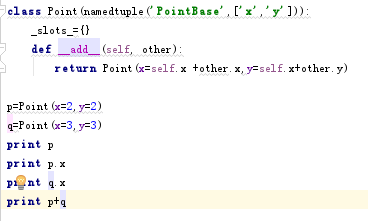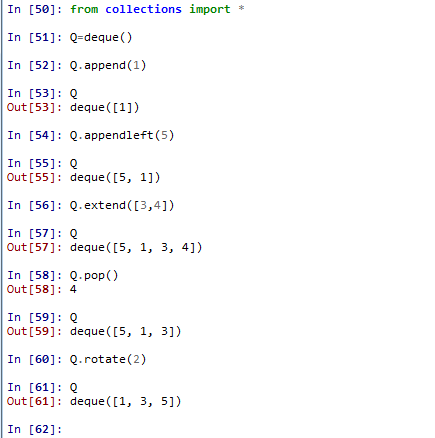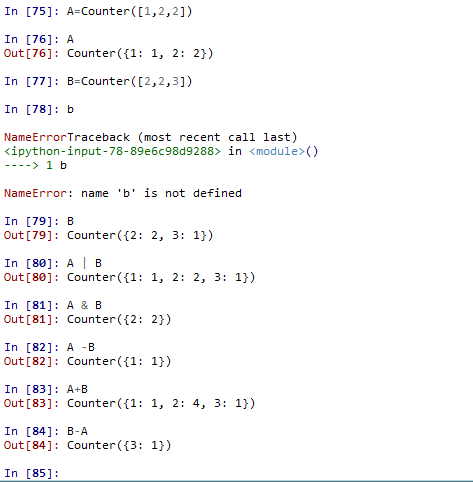一 :集合库collection
python 拥有一些内置的数据类型,collections模块提供啦几个额外的数据类型:
1,namedtuple 生成可以使用名字来访问元素内容的tuple子类
2,deque 双端队列,可以加速从另一侧追加和推出对象
3,counter 计数器,主要用来计数
4,orderedDict 有序字典
5,defaultdict 带有默认值的字典
1) namedtuple 命名的元祖形式,一般需要知道元祖里面每个字段代表什么含义,可以用命名元祖namedtuple

继承命名的tuples

2)deque 双端队列
deque最大的好处就是实现了从队列 头部快速增加和取出对象,比如popleft() 和appendleft()
append() appendleft() pop() popleft() extend() extendleft() rotate()
1,使用最多的就是限制队列长度,来获取队列的最后一个值或者几个值

2) deque 的其他用法,可以参考下

3) Counter 计数器
elements 返回一个迭代器,显示重复次数的元素,如果次数小于1,则被忽略
most_common 获取出现次数最多的元素
subtract 两个元素counter的元素进行相减




4) ordereddict 有序字典
5)defaultdict 默认字典
二 : heapd 堆队列
- heapq.heappush(heap, item)
-
Push the value item onto the heap, maintaining the heap invariant.
- heapq.heappop(heap)
-
Pop and return the smallest item from the heap, maintaining the heapinvariant. If the heap is empty,IndexError is raised. To access thesmallest item without popping it, use heap[0].
- heapq.heappushpop(heap, item)
-
Push item on the heap, then pop and return the smallest item from the heap. The combined action runs more efficiently than heappush()followed by a separate call to heappop().
- heapq.nlargest(n, iterable, key=None)
-
Return a list with the n largest elements from the dataset defined byiterable. key, if provided, specifies a function of one argument that isused to extract a comparison key from each element in the iterable:key=str.lower Equivalent to: sorted(iterable, key=key,reverse=True)[:n]
- heapq.nsmallest(n, iterable, key=None)
-
Return a list with the n smallest elements from the dataset defined byiterable. key, if provided, specifies a function of one argument that isused to extract a comparison key from each element in the iterable:key=str.lower Equivalent to: sorted(iterable, key=key)[:n]